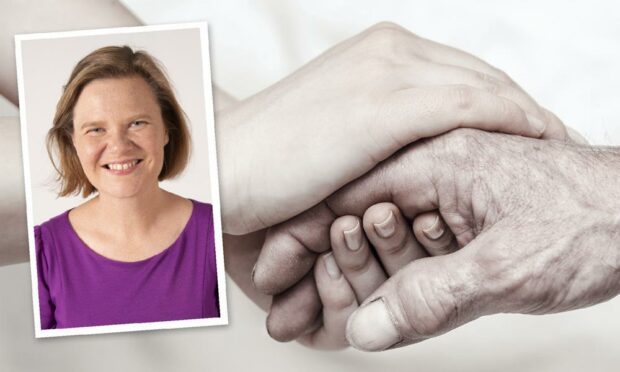We have heard families in Scotland describe immense distress as their loved ones died.
We have great respect for their courage and sympathy for their suffering.
How best should we respond?
There is no doubt that it must be with compassion and respect, but introducing state-assisted suicide is not the answer.
Doctors across Scotland are campaigning for improved access to, funding and research in specialist palliative care for these people, while opposing doctor-assisted suicide.
Currently the law prohibits the intentional taking of life.
Why? Because of the high value and worth that we traditionally place on all human life.
Dignity or ‘burden’?
The primary danger of assisted suicide is that individuals are devalued by society because they require care or are unproductive.
Societal values affect how we see ourselves – as individuals with worth and dignity, or as a burden?
Dr Wright was recently contacted by a frail elderly man urging her to oppose this measure.
He said: “I will begin to think I ought to take my own life.
“Why should the state keep paying for my care?
“If you give me the option, perhaps it would be less selfish to those I love for me to take my own life.”
Healthcare professionals need to affirm his value and worth, not acquiesce that his life is no longer worth living.
It’s hard enough to detect external coercion in an interview, this kind of internal coercion will be both more common and more difficult to deal with.
The current law is the safeguard, and for their sake it should remain.
Many countries who have legalised assisted suicide have found the criteria slowly widening.
In Belgium, their Intensive Care society now recommends euthanasia “without request” for those unlikely to fully recover.
One study found that half of cases of euthanasia there were not reported, and happened without the formal protections.
In Holland, euthanasia “without request” has extended to disabled babies and people with intellectual disabilities.
The cost will fall on the vulnerable
Every psychiatrist has experienced having to fight for life-extending treatments for our patients, who are often assumed to have little quality of life, often without the patient’s view being requested.
Former US President Thomas Jefferson wrote: “The measure of a society is how it treats is weakest members.”
The benefits of any change will be felt by those who are educated, articulate and empowered.
The costs fall on those who are the most vulnerable, who are confused, the frail elderly or those who have intellectual disabilities.
The current law is the safeguard, and for their sake it should remain.
Dr Gillian Wright is a palliative care specialist and director of Our Duty of Care, which represents healthcare professionals opposing the legalisation of assisted dying in Scotland.
Dr Jenny Bryden is a psychiatrist who previously worked at the Royal Cornhill Hospital.


